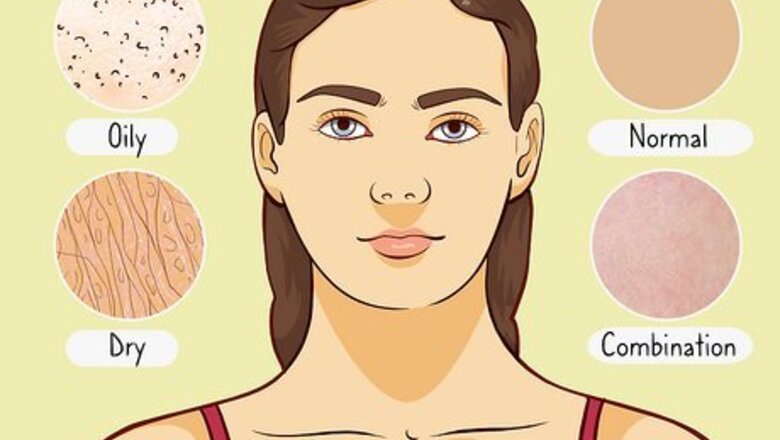
views
X
Expert Source
Joanna KulaSkincare Specialist
Expert Interview. 9 July 2019.
There are a wide variety of different types of exfoliant you can buy, and you need to start by determining your skin type and skin sensitivity. Choose a cream that will not be harsh on your skin, and use it modestly at first to see how your skin reacts.
Evaluating Your Requirements
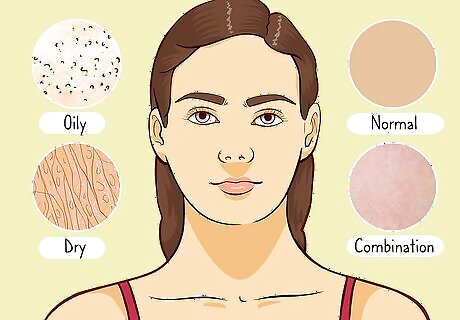
Determine your skin type. Many products are suitable for a certain skin type, so to give yourself the best chance of finding the right cream for you, you should start by determining your skin type. The first thing to identify is your skin type: oily, dry, combination or normal. These can be approximations, so look at the indicators for each one and see which best matches your skin. Oily: you may have enlarged pores, a dull, shiny or thick complexion, visible blackheads, pimples or other skin imperfections. Dry: your pores may be almost invisible, you might have a dull, rough complexion. You may have red patches on your skin, which might be less elastic, and have more visible lines. Normal: you may have no or few visible imperfections, no severe sensitivity, a radiant and bright complexion, and barely visible pores. Combination: you may have oily skin in some areas, and dry or normal skin in other areas. Combination skin may have overly dilated pores, shiny skin and blackheads in the T-zone, or along the center of the face and forehead.
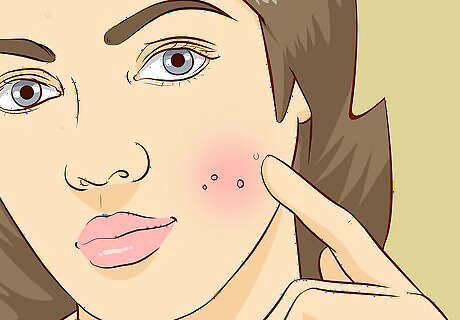
Consider whether you have sensitive skin. Once you have determined what kind of skin you have, you need to think about whether you have particularly sensitive skin. There is no dermatological definition of sensitive skin, but you should consider your experience. Exfoliating creams can be harsh on those with sensitive skin, so you should take this into account. Your skin may be sensitive if: You easily break out in rashes. Your skin often gets blotchy and itchy after using skincare products or in response to the weather. Your skin sometimes stings after washing, or being outside.
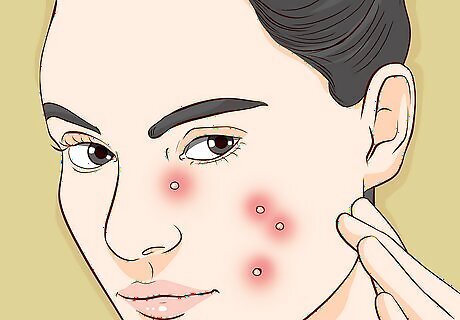
Consider if you have acne-prone skin. If you are prone to breakouts and you often have pimples, you may have acne-prone skin. It’s important to think about this and take it account when you are choosing an exfoliating cream. Exfoliating products can aggravate acne-prone skin, especially if they are courser or rougher creams.

Know when to contact a medical professional. If you are having serious problems with your skin, and you are struggling to determine which kind of products are best for you, make an appointment with a doctor or dermatologist. A medical expert will be able to give you fully informed advice about what to try. In some instances you may be prescribed particular treatments. Speak to a medic if you skin is not responding to over-the-counter treatments.
Choosing the Right Cream For You
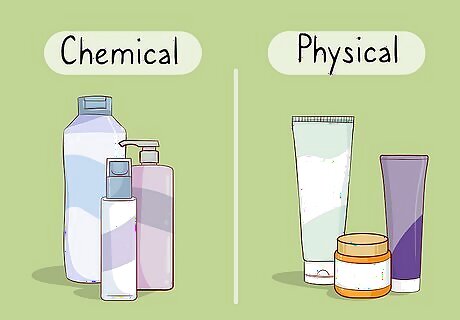
Identify the different types of exfoliating products. Before you go ahead and try to get the right exfoliating cream for you, it’s a good idea to find out about the different types of products available. Generally exfoliating products can be divided into the two categories of physical (sometimes known as mechanical), and chemical. Physical products are grainy, with abrasive ingredients designed to physically remove dead skin cells. Physical exfoliants are generally scrubs, or microdermabrasion pads. Chemical exfoliants use enzymes or acids to remove dead skin cells. Chemical exfoliants can be creams, gels and scrubs. They often contain either alpha hydroxy acids (AHAs), or beta hydroxy acids (BHAs).
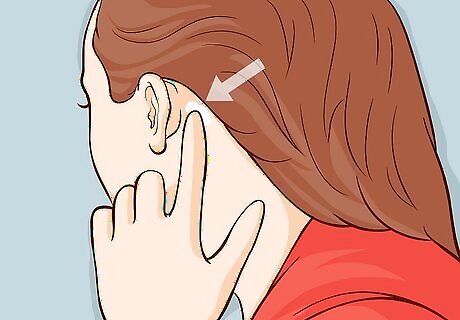
Test a chemical exfoliant before you use it. Use a small amount of the product on the area of the neck behind the ear. Look for signs of hypersensitivity within 24 hours. If everything seems to be fine, you can then use it on your face. Use it only once a twice a week at the start and monitor the reaction. You can tell if an exfoliant is a chemical or physical exfoliant based on whether you can feel the small scrubbing particles. If you can feel these small grains on your skin, the product is a physical exfoliant, and you don’t need to do a sensitivity test. If the exfoliant feels smooth, it’s a chemical exfoliant.
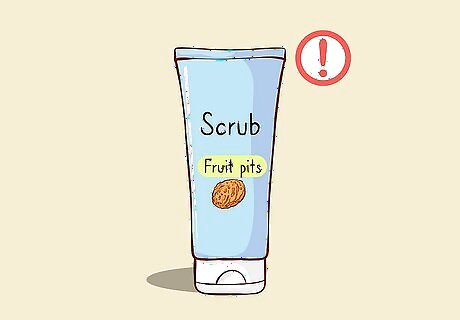
Be cautious with any kind of exfoliator. Make sure that you have the right texture for your skin and isn’t too harsh. You want to get a scrub that feels grainy, but not sharp. Avoid scrubs that contain ingredients like fruit pits or nut shells, which can create tiny tears in your skin. You may like to follow exfoliation with a moisturizer to tackle any dryness you experience. If you have a darker complexion be extra careful, because an exfoliant may provoke post-inflammatory pigmentation, which can be hard to reverse.
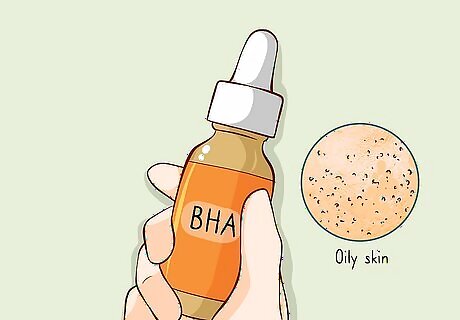
Choose an exfoliant for oily skin. If you have oily skin, you should try a chemical exfoliant that has BHA. These products can be the most effective at exfoliating the surface of your skin and inside your pores. If you don’t want to use a chemical exfoliant, try a gentle physical exfoliant. Try a small amount of a new product first to see how your skin reacts. If you have oily skin, you may be able to exfoliate once a day. If your skin becomes sore or irritated, exfoliate less often. Remember to only use one exfoliant in your skincare routine. Never use 2 exfoliants back-to-back. Using too many products at once can irritate your skin and alter its pH level, especially if you have oily skin.
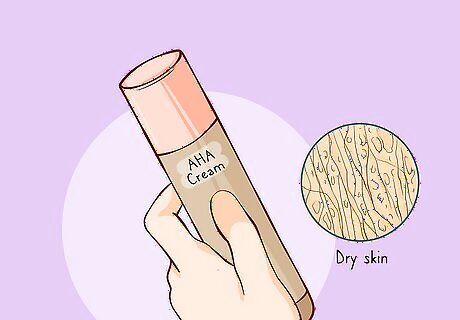
Try an AHA cream for dry skin. If you have dry skin, you will need something a little less severe than if you had oily skin. AHA is a softer option than BHA, and is great for soothing patches of dry skin. You will only need surface exfoliation, and a harsher product could cause more dryness and discomfort. If you have dry skin, it’s best to exfoliate less frequently. Start by only exfoliating once a week and then see how your skin responds. Experiment with how often you exfoliate and see what works best for you and your skin.
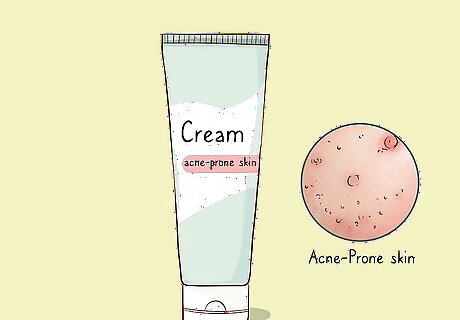
Opt for a cream for acne-prone skin. If you have acne-prone skin, you should take care and ensure that you do not use an exfoliant that is too rough or harsh. Doing so may cause inflammation and aggravate your acne. Exfoliation can help you to clear out dead skin, and clear your pores. Try a BHA product that is designed for everyday use, such as glycolic acid. This should mean that it is gentle enough not to irritate or inflame your skin, but you will still benefit from the deeper exfoliation without the physical aggravation. If you are struggling to cope with oily and acne-prone skin, talk to your doctor about prescription retinoids.
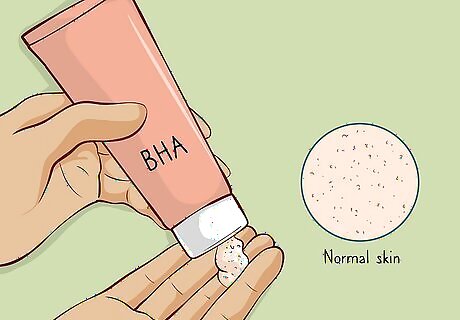
Consider a cream designed for normal skin. If you have normal skin, you should try a BHA product or a mild physical exfoliant. Normal skin should enable you to use a BHA product which exfoliates more deeply than one you would use if you had dry or sensitive skin. People with normal skin can generally exfoliate twice a week. Always monitor your skin and note how it responds to the product you use.
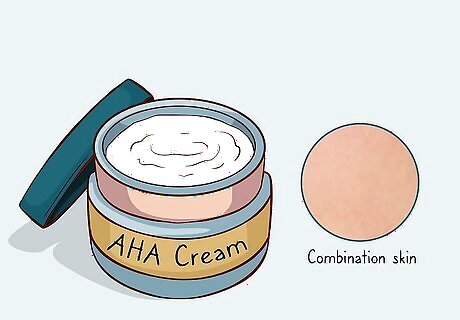
Change your combination skin exfoliant based on the season. Combination skin can tend towards more oily or more dry, depending on your skin as well as the weather and season. Pay attention to your skin throughout the year and see when it seems to get most chapped, and when it becomes oilier. Keep products on hand for both, such as an AHA cream for when your skin is dry and a BHA product for when it’s more oily. Remember to only use one exfoliant at a time. Never use both products at once.

Choose an exfoliating cream for sensitive skin. For sensitive skin you should be extra careful not to use a harsh exfoliant. Avoid anything that has a high content of glycolic acid, and look for gentle exfoliants that are specifically designated as suitable for sensitive skin. Use a very gentle scrub, and be modest with your usage. Avoid all strong peels and scrubs, but consider something softer like an enzymatic peel. Products with bromelain, papain or ficain can be good for sensitive skin. Don’t exfoliate more than once a week, and stop if you experience pain or irritation. Use a moisturiser after exfoliating, to ease dryness.




















Comments
0 comment